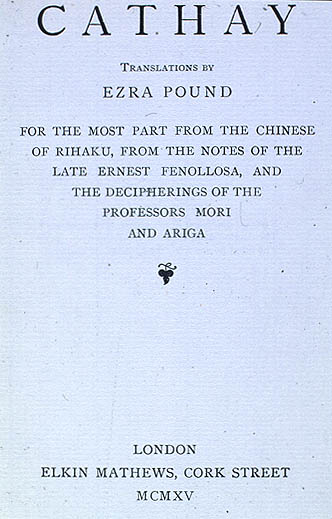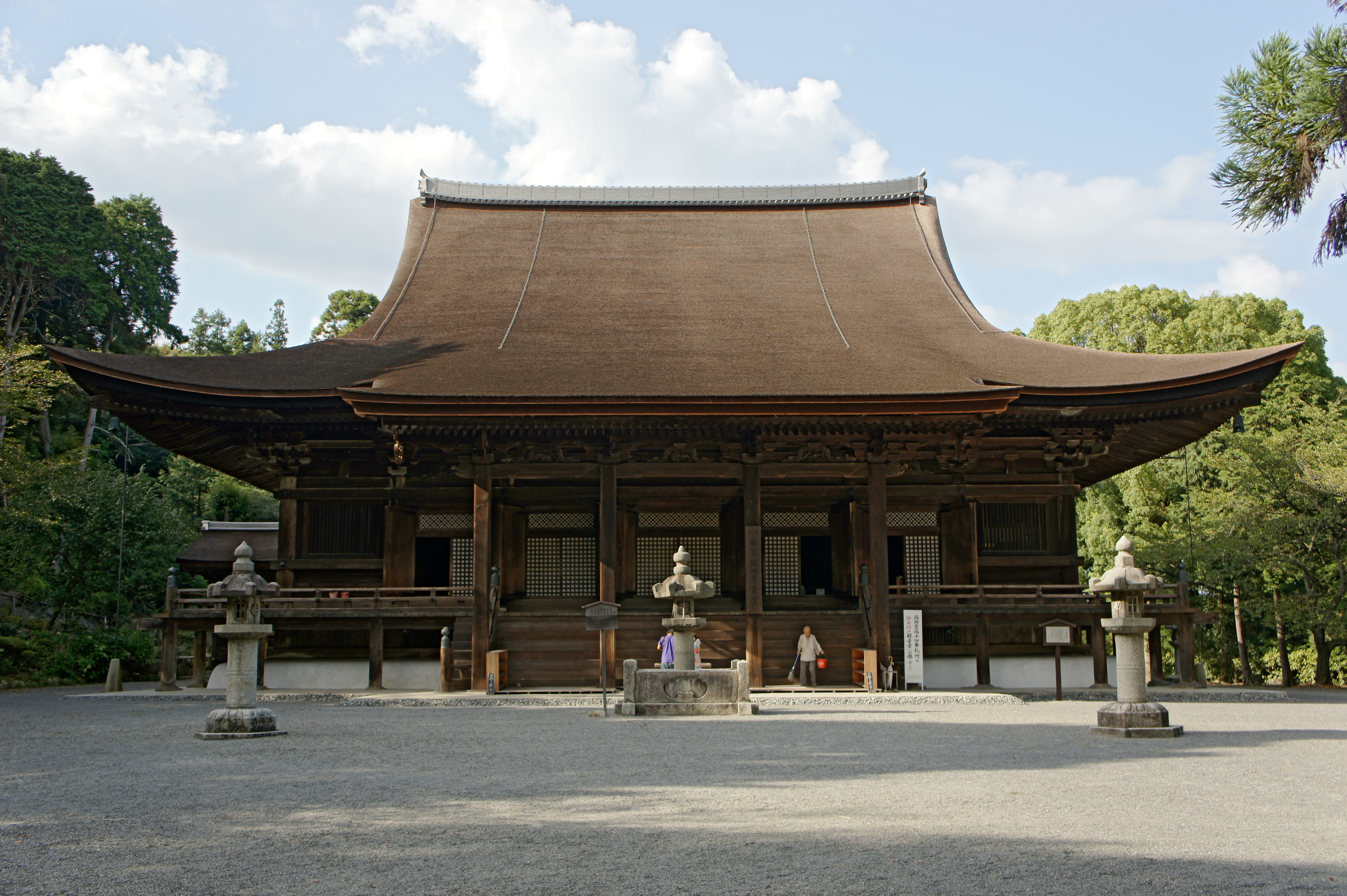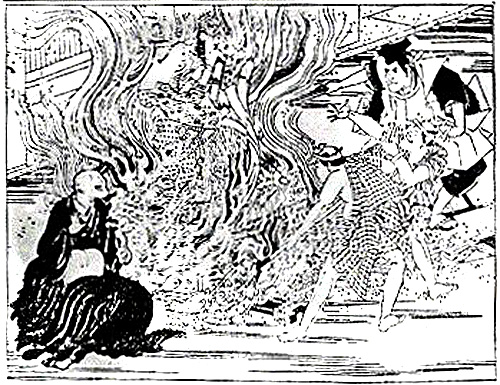|
Ernest Fenollosa
Ernest Francisco Fenollosa (February 18, 1853 – September 21, 1908) was an American art historian of Japanese art, professor of philosophy and political economy at Tokyo Imperial University. An important educator during the modernization of Japan during the Meiji Era, Fenollosa was an enthusiastic Orientalist who did much to preserve traditional Japanese art. Biography Fenollosa was born in 1853 as the son of Manuel Francisco Ciriaco Fenollosa, a Spanish pianist born in Málaga in 1818, and Mary Silsbee, a member of a prominent family in Boston. He attended public schools in his hometown of Salem, Massachusetts before studying philosophy and sociology at Harvard College, where he graduated in 1874. He studied for a year at the art school of the Boston Museum of Fine Arts, during which time he married Elizabeth Goodhue Millett. In 1878 he was invited to Japan by American zoologist and Orientalist Edward S. Morse. Fenollosa taught political economy and philosophy at the ... [...More Info...] [...Related Items...] OR: [Wikipedia] [Google] [Baidu] |
Mii-dera
, formally called , is a Buddhist temple in Japan located at the foot of Mount Hiei, in the city of Ōtsu in Shiga Prefecture. It is a short distance from both Kyoto, and Lake Biwa, Japan's largest lake. The head temple of the Jimon sect of Tendai, it is a sister temple to Enryaku-ji, at the top of the mountain, and is one of the four largest temples in Japan. Altogether, there are 40 named buildings in the Mii-dera complex. Mii-dera is temple 14 in the Saigoku Kannon Pilgrimage. History Founding, and feuds Onjō-ji was founded in the Nara period. The temple was founded in 672 following a dispute over Imperial succession. Emperor Tenji had died, and his son was killed by Tenji's brother, who was then enthroned as Emperor Tenmu. Temmu founded Onjō-ji in honor and memory of his brother. The name ''Mii-dera'' ("Temple of Three Wells") came about nearly two centuries later. It was given this name by Enchin, one of the earliest abbots of the Tendai Sect. The name comes from ... [...More Info...] [...Related Items...] OR: [Wikipedia] [Google] [Baidu] |
Sociology
Sociology is a social science that focuses on society, human social behavior, patterns of Interpersonal ties, social relationships, social interaction, and aspects of culture associated with everyday life. It uses various methods of Empirical research, empirical investigation and critical analysis to develop a body of knowledge about social order and social change. While some sociologists conduct research that may be applied directly to social policy and welfare, others focus primarily on refining the Theory, theoretical understanding of social processes and phenomenology (sociology), phenomenological method. Subject matter can range from Microsociology, micro-level analyses of society (i.e. of individual interaction and agency (sociology), agency) to Macrosociology, macro-level analyses (i.e. of social systems and social structure). Traditional focuses of sociology include social stratification, social class, social mobility, sociology of religion, religion, secularization, S ... [...More Info...] [...Related Items...] OR: [Wikipedia] [Google] [Baidu] |
Emperor Meiji
, also called or , was the 122nd emperor of Japan according to the traditional order of succession. Reigning from 13 February 1867 to his death, he was the first monarch of the Empire of Japan and presided over the Meiji era. He was the figurehead of the Meiji Restoration, a series of rapid changes that witnessed Japan's transformation from an isolationist, feudal state to an industrialized world power. At the time of Emperor Meiji's birth in 1852, Japan was a feudal pre-industrial country dominated by the isolationist Tokugawa shogunate and the ''daimyō'' subject to it, who ruled over the country's 270 decentralized domains. By the time of his death, Japan had undergone an extensive political, economic, and social revolution and emerged as one of the great powers on the world stage. ''The New York Times'' summarized this transformation at the emperor's funeral in 1912: "the contrast between that which preceded the funeral car and that which followed it was striking indeed. ... [...More Info...] [...Related Items...] OR: [Wikipedia] [Google] [Baidu] |
Haibutsu Kishaku
(literally "abolish Buddhism and destroy Shākyamuni") is a term that indicates a current of thought continuous in Japan's history which advocates the expulsion of Buddhism from Japan. Under the shogunate, obtaining the permission to open or close a temple had not been easy. However, the complete disappearance of Buddhist temples from domains like Satsuma was indeed due to the ''haibutsu kishaku''. See also *State Shinto *Buddhism in Japan * Koshintō *Hujum *USSR anti-religious campaign (1928-1941) *Martyrs of Japan *Persecution of Buddhists * Shinbutsu bunri *Shinbutsu kakuri *Shinbutsu-shūgō *Tokugawa Nariaki *Buddhist crisis *Chittagong Hill Tracts Conflict * Buddhas of Bamyan#Attacks on the Buddha's statue *Iconoclasm Notes References * Breen, John and Mark Teeuwen. (2000) ''Shinto in History: Ways of the Kami.''Honolulu: University of Hawaii Press A university () is an institution of higher (or tertiary) education and research which awards academic degrees in ... [...More Info...] [...Related Items...] OR: [Wikipedia] [Google] [Baidu] |
National Treasure Of Japan
Some of the National Treasures of Japan A is the most precious of Japan's Tangible Cultural Properties, as determined and designated by the Agency for Cultural Affairs (a special body of the Ministry of Education, Culture, Sports, Science and Technology). A Tangible Cultural Property is considered to be of historic or artistic value, classified either as "buildings and structures" or as "fine arts and crafts." Each National Treasure must show outstanding workmanship, a high value for world cultural history, or exceptional value for scholarship. Approximately 20% of the National Treasures are structures such as castles, Buddhist temples, Shinto shrines, or residences. The other 80% are paintings; scrolls; sutras; works of calligraphy; sculptures of wood, bronze, lacquer or stone; crafts such as pottery and lacquerware carvings; metalworks; swords and textiles; and archaeological and historical artifacts. The items span the period of ancient to early modern Japan before the ... [...More Info...] [...Related Items...] OR: [Wikipedia] [Google] [Baidu] |
Kanō School
The is one of the most famous schools of Japanese painting. The Kanō school of painting was the dominant style of painting from the late 15th century until the Meiji period which began in 1868, by which time the school had divided into many different branches. The Kanō family itself produced a string of major artists over several generations, to which large numbers of unrelated artists trained in workshops of the school can be added. Some artists married into the family and changed their names, and others were adopted. According to the historian of Japanese art Robert Treat Paine, "another family which in direct blood line produced so many men of genius ... would be hard to find". The school began by reflecting a renewed influence from Chinese painting, but developed a brightly coloured and firmly outlined style for large panels decorating the castles of the nobility which reflected distinctively Japanese traditions, while continuing to produce monochrome brush paintin ... [...More Info...] [...Related Items...] OR: [Wikipedia] [Google] [Baidu] |
Buddhism
Buddhism ( , ), also known as Buddha Dharma and Dharmavinaya (), is an Indian religion or philosophical tradition based on teachings attributed to the Buddha. It originated in northern India as a -movement in the 5th century BCE, and gradually spread throughout much of Asia via the Silk Road. It is the world's fourth-largest religion, with over 520 million followers (Buddhists) who comprise seven percent of the global population. The Buddha taught the Middle Way, a path of spiritual development that avoids both extreme asceticism and hedonism. It aims at liberation from clinging and craving to things which are impermanent (), incapable of satisfying ('), and without a lasting essence (), ending the cycle of death and rebirth (). A summary of this path is expressed in the Noble Eightfold Path, a training of the mind with observance of Buddhist ethics and meditation. Other widely observed practices include: monasticism; " taking refuge" in the Buddha, the , and the ; ... [...More Info...] [...Related Items...] OR: [Wikipedia] [Google] [Baidu] |
Tokyo University Of The Arts
or is the most prestigious art school in Japan. Located in Ueno Park, it also has facilities in Toride, Ibaraki, Yokohama, Kanagawa, and Kitasenju and Adachi, Tokyo. The university has trained renowned artists in the fields of painting, sculpture, crafts, inter-media, sound, music composition, traditional instruments, art curation and global arts. History Under the establishment of the National School Establishment Law, the university was formed in 1949 by the merger of the and the , both founded in 1887. The former Tokyo Fine Arts School was then restructured as the Faculty of Fine Arts under the university. Originally male-only, the school began to admit women in 1946. The graduate school opened in 1963, and began offering doctoral degrees in 1977. The doctoral degree in fine art practice initiated in the 1980s was one of the earliest programs to do so globally. After the abolition of the National School Establishment Law and the formation of the National University Corpo ... [...More Info...] [...Related Items...] OR: [Wikipedia] [Google] [Baidu] |
Hashimoto Gahō
was a Japanese painter, one of the last to paint in the style of the Kanō school. He was one of the first five painters to be appointed as an Imperial Household Artist and was one of the most authoritative painters in Japan at that time. Biography  Born in , he studied painti ...
Born in , he studied painti ...
[...More Info...] [...Related Items...] OR: [Wikipedia] [Google] [Baidu] |
Kanō Hōgai
Kanō Hōgai (狩野 芳崖, February 27, 1828 – October 5, 1888) was a Japanese painter of the Kanō school. Life The son of the local daimyō's chief painter, he was sent at the age of 18 to Edo to study painting formally. He stayed there for ten years and studied under Kanō Shōsen'in and other prominent artists of the time. Hōgai would eventually be called upon for such esteemed commissions as ceiling paintings for Edo Castle. He also received the honor of having some of his works displayed at the 1876 Paris International Exposition. However, despite these honors, the economic turmoil created by the fall of the shogunate in 1868 forced Hōgai to seek to support himself with income via more mundane methods. He worked at casting iron, reclaiming land, and running a shop selling writing instruments. In 1877 Hōgai returned to Edo, now called Tokyo, and worked for the wealthy Shimazu clan; this gave him the opportunity to study works by some of Japan's greatest painting m ... [...More Info...] [...Related Items...] OR: [Wikipedia] [Google] [Baidu] |
Nihonga
''Nihonga'' (, "Japanese-style paintings") are Japanese paintings from about 1900 onwards that have been made in accordance with traditional Japanese artistic conventions, techniques and materials. While based on traditions over a thousand years old, the term was coined in the Meiji period of Imperial Japan, to distinguish such works from Western-style paintings or ''Yōga'' (). History The impetus for reinvigorating traditional painting by developing a more modern Japanese style came largely from many artist/educators, which included Shiokawa Bunrin, Kōno Bairei, Tomioka Tessai and art critics Okakura Tenshin and Ernest Fenollosa, who attempted to combat Meiji Japan's infatuation with Western culture by emphasizing to the Japanese the importance and beauty of native Japanese traditional arts. These two men played important roles in developing the curricula at major art schools, and actively encouraged and patronized artists. ''Nihonga'' was not simply a continuation of olde ... [...More Info...] [...Related Items...] OR: [Wikipedia] [Google] [Baidu] |
Okakura Kakuzō
(also known as 岡倉 天心 Okakura Tenshin) was a Japanese scholar and art critic who in the era of Meiji- Restoration reform defended traditional forms, customs and beliefs. Outside Japan, he is chiefly renowned for ''The Book of Tea: A Japanese Harmony of Art, Culture, and the Simple Life'' (1906). Written in English, and in the wake of the Russo-Japanese War, it decried Western caricaturing of the Japanese, and of Asians more generally, and expressed the fear that Japan gained respect only to the extent that it adopted the barbarities of western militarism. Early life and education The second son of Okakura Kan'emon, a former Fukui Domain treasurer turned silk merchant, and Kan'emon's second wife, Kakuzō was named for the corner warehouse (角蔵) in which he was born, but later changed the spelling of his name to different Kanji meaning "awakened boy" (覚三). Okakura learned English while attending a school operated by a Christian missionary, Dr. James Curtis Hepburn, ... [...More Info...] [...Related Items...] OR: [Wikipedia] [Google] [Baidu] |






